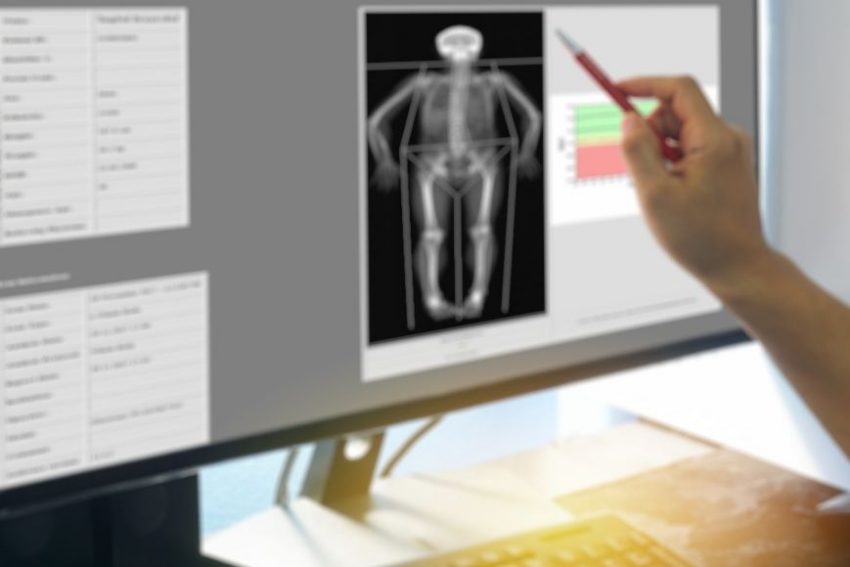The Bone Densitometry Department operating within Bioscan performs all the necessary exams. The Department is equipped with a modern Lunar Prodigy system by General Electric, ensuring accurate measurements, excellent resolution and low radiation dose.
Bone densitometry is performed using the dual-energy X-ray absorptiometry (DEXA) method, in one scan, as fast as possible, reducing the exam time.
Bone densitometry is a modern exam revealing whether someone has normal bone density, low bone density or osteoporosis. The lower the bone density values, the higher the risk of a bone fracture. Therefore, the specific exam:
- Provides information about the condition of the bones (weak or brittle) before they break.
- Assesses the potential risk of fracture.
- Measures the extent to which the bone mass is deteriorating, is improving or remains unchanged.
- Assesses the effectiveness of pharmaceutical treatment, and whether it should be continued, interrupted or modified.
Bone densitometry is painless, non-invasive and safe, with a very low radiation dose. According to the World Health Organization, the exam must mainly be performed on two parts of the body: the lumbar vertebra and the hip. Exceptionally, the exam may be performed on the forearm (distal radius).
During the exam, patients lie under the special scanner, without having to take their clothes off. The scanner moves along the entire body of the patient, to take an image of the area of interest. The exam is quick, lasting about 15 minutes.
Osteoporosis is a condition that mainly affects post-menopausal women, but it may also affect men, to a smaller extent. Therefore, the specific exam is recommended for:
- Women over 65 years
- Men over 70 years
- Menopausal women with risk factors
- Post-menopausal women under 65 years with risk factors
- People with family history of hip fracture of parents
- People with BMI < 20
- People undergoing cotricosteroid treatment
- Active smokers
- People with insufficient calcium intake or production of vitamin D
The Bioscan lab performs ground-breaking full-body analysis using the DEXA method.
DEXA is the method of choice for fat determination. It is better than all the other body analysis methods as it is able to measure the adipose tissue, muscle tissue and fluids per body area. The other methods focus exclusively on adipose and non-adipose tissue, and the relevant measurements are inaccurate, as opposed to the DEXA method measurements, with an accuracy rate > 99%.
- People who wish to lose weight.
- Professional athletes who closely monitor their body weight or are in recovery following injury, because this way, they can: 1. Measure the fat to muscle ratio, 2. Design a personalized exercise and diet plan to reach their personal goals faster.
- People recovering from injury or illness, to evaluate muscle atrophy.
- People with chronic diseases (diabetes mellitus, hypothyroidism, Crohn’s disease, celiac disease, COPD, etc.), who must follow a strict diet.


